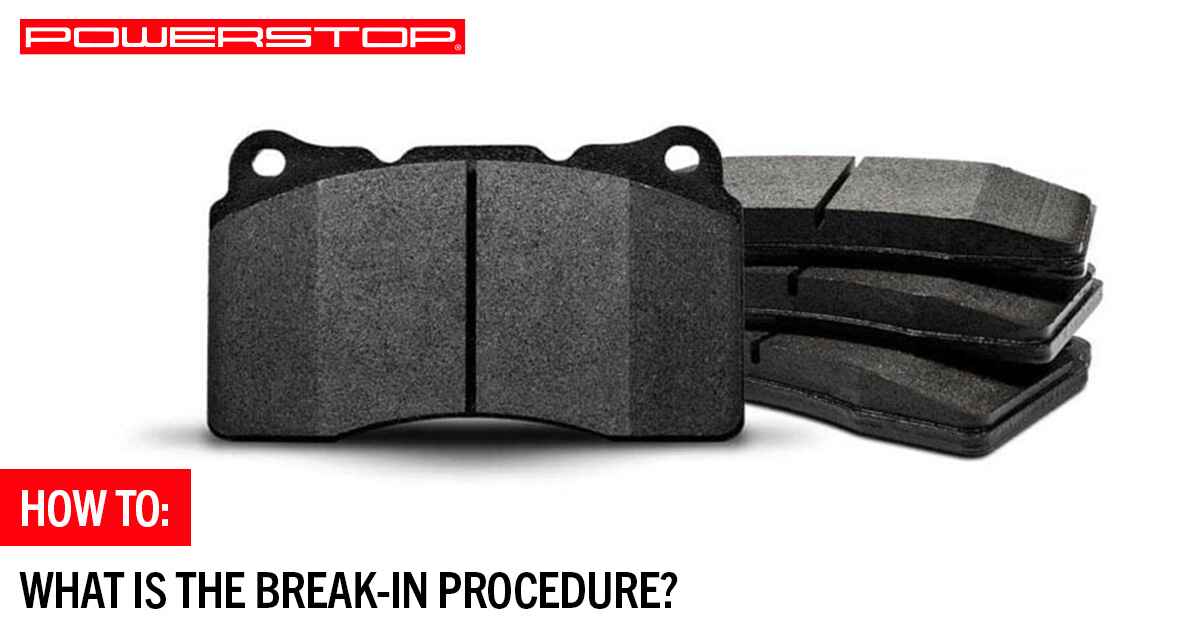
Your brakes are a vital component of controlling your vehicle. When you press down on the brake, it should feel firm. If you notice your brakes feeling soft or spongy, something is wrong.
In this PowerStop guide, we will explain how to identify spongey brakes, common causes of soft pedals, and discuss when it may be a good idea to bleed your brakes.
What Are Spongy Brakes?
When a brake system is operating normally, you should feel little to no difference in the brake pedal’s firmness while engaging the brakes.
If your brake pedal feels different when you press it down, it is a sign that there is a problem.
Not only can spongy brakes compromise your vehicle’s performance, but they can also compromise your safety on the road.
What Are the Signs of Spongy or Soft Brakes?
Indicators of spongy brakes can include:
1. Your Brake Pedal Sinks
When a vehicle fails to maintain brake pressure as effectively as it should, it causes the brake pedal to sink without resistance when it is pressed down.
A sinking brake pedal is a tell-tale sign that there are issues with your brake system and you should inspect them right away.
2. You Need to Pump Your Brakes
If you have to pump your brakes repeatedly to slow down your vehicle and keep it from creeping ahead, it could indicate a fluid leak in your braking system.
If there are no visible brake fluid leaks and the brake warning light is not on, you may have a worn or leaking master cylinder. This is a sign that your vehicle requires immediate maintenance.
3. Your Brake Warning Light Is On
Some vehicles have built-in dashboard indicators that illuminate when the brake system is compromised.
While a brake warning light could signify a number of issues, from low brake fluid to an engaged parking brake, it could also indicate a problem with your brake fluid pressure. Because of this, it is best to check all your brake components whenever a warning light flashes.
Common Causes of a Soft or Spongy Brake Pedal
Spongy brakes are more than just a nuisance; they are dangerous. If you feel anything off when you step on the brake pedal, you need to know what is causing the problem and ensure the problem is fixed quickly.
Below are some of the most common reasons why a brake pedal may feel soft or spongy.
Brake Fluid Leak
Brake lines are made of steel tubing, which can become corroded by rust due to moisture, road salt, or regular wear and tear. Over time, rust can cause the development of small holes through which brake fluid can leak. Brake fluid loss leads to hydraulic pressure loss, which causes the brake pedal to feel low or soft and go to the floor.
A leak can typically be identified by checking the fluid level in the reservoir. Also, inspect
calipers, brake hoses, and brake lines to the master cylinder for leaks.
Worn Out Brake Hoses
Air can go places that fluid will not. Old brake hoses can leak air through the outside of the hose and not leak fluid. If the inside of the hose has broken down, air can enter and exit the hose, causing a similar scenario as a fluid leak.
Swelling is an indication that a hose is worn out. Any amount of swelling indicates a bad brake hose. Have someone press the brake pedal while you inspect the hoses for leaks or swelling.
The best way to address this is to simply replace the brake hoses. Fortunately, if you inspect the hoses and believe there is even a possibility that old, worn brake hoses could be responsible for your soft brake pedal, they are probably old enough that they need to be changed anyway.
PowerStop may have the brake hoses you need. Our Brake Finder can help match you with brake hoses for your vehicle
Air in the Brake System
One of the most common causes of soft and spongy brake pedals is air in the brake system. Air can be introduced to the system by overheating the caliper, causing the brake fluid to boil.
Brake fluid does not flow properly when air gets into the brake lines. If rapidly pumping a soft pedal restores pedal pressure, there is most likely air in the system.
If you notice soft or spongy brakes, consider changing or flushing the brake fluid. Commonly called bleeding the brakes, flushing brake fluid removes air from the brake system. If it is not properly bled after replacing a component, air can become trapped in a system.
Brake fluid can absorb moisture over time. You should flush the brake fluid regularly to prevent old fluid from boiling, causing a low brake pedal. New, clean fluid will protect and preserve other brake components such as the ABS (anti-lock brake system) and the master cylinder, ensuring long, trouble-free operation.
Brake Fluid Contamination
Brake fluid can become contaminated for a number of reasons and affect brake performance—including a soft or spongy brake pedal. Causes of brake fluid contamination can include:
- Rust or debris in the system: Debris and rust in the brake system can contaminate brake fluid. Also, if the components within the system have defects, the seals can change shape, swell up, or start leaking.
- Fluid has gone too long without being changed: Brake fluid is just like the oil in your engine and other mechanical systems in your vehicle. Change your brake fluid at the recommended intervals, and flush the system at least every two years. If brake fluid goes too long without being changed, it can absorb moisture into the system and change the fluid’s compression characteristics.
- Vehicle contains a mixture of fluid types: There are a variety of different types of brake fluid. If a braking system initially had a Dot 3 or Dot 4 fluid, and then a Dot 5 Silicone Fluid is used, it will likely cause a problem. Dot 5 fluid does not mix with any other type of brake fluid and can cause the system to gum or gel up.
Why Is My Brake Pedal Spongey?
Still not sure what may be causing your spongy brake pedal problem? These tips can point you in the right direction if there are common issues with your vehicle:
- Check for any recalls or technical service bulletin (TSB) related to the symptoms or vehicle system of concern.
- Look up common complaints on the National Highway Traffic Safety Administration’s website.
When Should I Bleed My Brakes?
The brake system should be bled if:
- The hydraulic system is opened
- Brake fluid is flushed
- Air is present in the system
- A brake component is replaced
Not all vehicles have the same bleeding procedure. You should always refer to your Factory Service Manual for the proper procedure.
Many newer vehicles require a scan tool to bleed the ABS unit. A soft or spongy pedal may remain if this is not completed.
Is It Safe to Drive With a Spongy Brake Pedal?
No. If your brake pedal feels spongy, your vehicle is not safe to drive. Identify and repair the underlying issue as quickly as possible.
Spongy brakes are common and dangerous problems for any vehicle and indicative of a deeper problem. Most importantly, a soft or spongy brake prevents you from stopping as quickly as you need.
Spongy brakes could be a sign of a leak, and a small leak can turn into a large one with just a push of the brakes. If a leak escalates into a blowout, you will lose brake pressure completely. This means you won’t just take longer to stop; you will not be able to stop at all.
Even if the brakes are not leaking, a spongy brake pedal could mean that there is air in the system. The spongy feeling that occurs when the brake pedal is pressed is air hitting the caliper. Your brakes are not working when this happens.
These problems will not improve or fix themselves over time. You need you correct the issue immediately.
Have a Question? PowerStop Can Help
PowerStop is committed to providing top-quality performance brakes for every vehicle on the road. If you have a question about any of our products, contact us today online or toll-free at (888) 863-4415. Our customer service team is available to answer your questions Monday through Friday from 8 a.m. to 5 p.m. (CST). Se habla español.
Back



